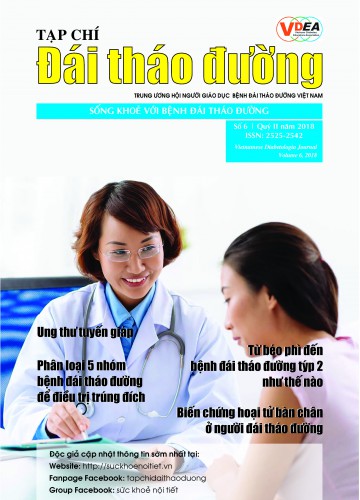Đăng ký
Vui lòng nhập các thông tin cần thiết

Tóm tắt: Nghiên cứu nhằm tìm câu trả lời về tình trạng kháng insulin ở các đối tượng đái tháo đường týp 2 có rối loạn lipid máu tại Việt Nam để đề ra cách kiểm soát, điều trị bệnh tốt hơn. Đề tài tiến hành lựa chọn 163 bệnh nhân đái tháo đường týp 2 được chẩn đoán lần đầu trong đó có 95 (58%) bệnh nhân có rối loạn lipid máu, nhóm chứng gồm 53 người bình thường. Thu thập số liệu thông qua khám lâm sàng, xét nghiệm lipid máu, insulin, C-peptid. Kết quả cho thấy: tuổi trung bình của người đái tháo đường được chẩn đoán lần đầu là 53,8±12,2 (nữ là 53,0±13,6, nam là 54,6±10,7); ngay thời điểm phát hiện đã có 58% rối loạn lipid máu. Nhóm đái tháo đường không RLLM có chỉ số insulin, C-peptid, TC, TG, LDL-C thấp hơn nhóm ĐTĐ có RLLM. Như vậy, ở các đối tượng đái tháo đường có rối loạn lipid máu có hiện tượng kháng insulin do vậy cần phải xem xét đến đặc điểm này trong quá trình điều trị.
Từ khóa: đái tháo đường týp 2, rối loạn lipid máu, kháng insulin
CLINICAL CHARACTERISTICS AND RISK FACTORS OF PEOPLE WITH NEWLY DIAGNOSED TYPE 2 DIABETES AND WITH DYSLIPIDEMIA
Summary: The study aimed to find the answers to insulin resistance in people with type 2 diabetes with dyslipidemia in Vietnam to provide better knowledge of control and treatment. 163 patients with type 2 diabetes were diagnosed for the first time, among them 95 (58%) patients with dyslipidemia, and 53 subjects were recruited as the control. Data collection through clinical examination, blood lipid, insulin, and C-peptide tests. The results showed that the mean age at diagnosis of diabetes was 53.8 ± 12.2 (53.0 ± 13.6 for females; 54.6 ± 10.7 for males). The index of insulin, C-peptide, TC, TG, and LDL-C of the group of diabetes without dyslipidemia was significantly lower than those with dyslipidemia. Thus, insulin resistance and dyslipidemia should be considered during treatment.
Key words: type 2 diabetes mellitus, dyslipidemia, insulin resistance
TÀI LIỆU THAM KHẢO